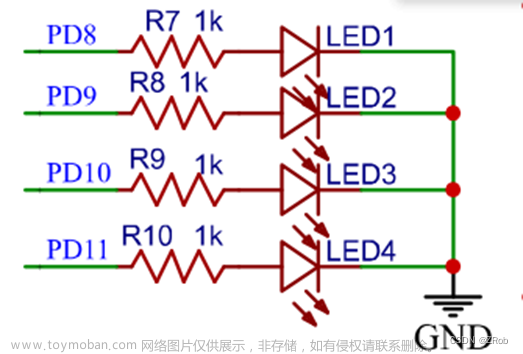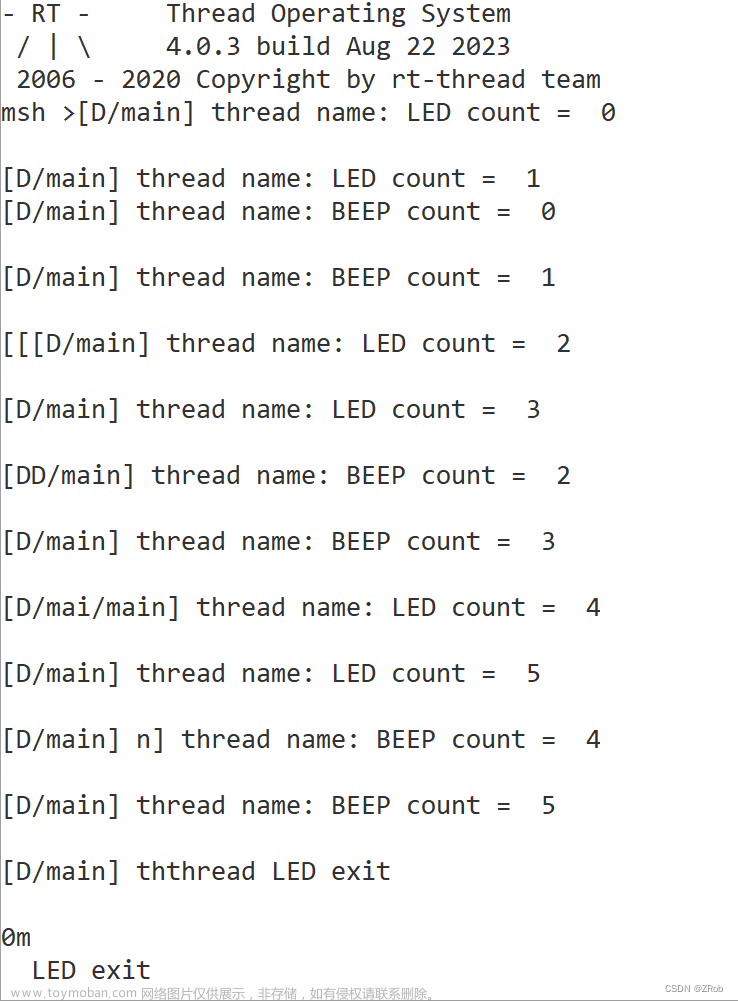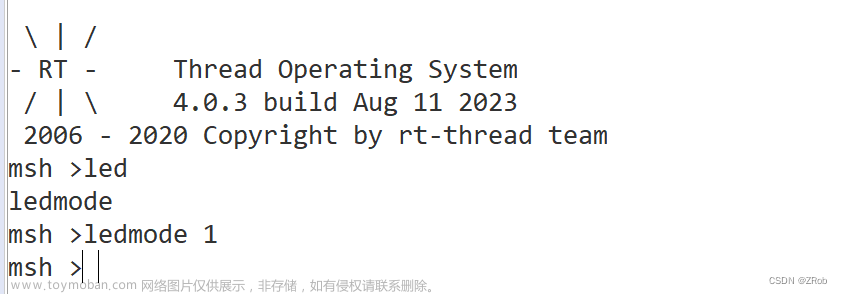创建一个线程
Java 提供了三种创建线程方法:
-
通过实现 Runnable 接口;
-
通过继承 Thread 类本身;
-
通过 Callable 和 Future 创建线程。
通过实现 Runnable 接口来创建线程
创建一个线程,最简单的方法是创建一个实现 Runnable 接口的类。
为了实现 Runnable,一个类只需要执行一个方法调用 run(),声明如下:
public void run()你可以重写该方法,重要的是理解的 run() 可以调用其他方法,使用其他类,并声明变量,就像主线程一样。
在创建一个实现 Runnable 接口的类之后,你可以在类中实例化一个线程对象。
Thread定义了几个构造方法,下面的这个是我们经常使用的:
Thread(Runnable threadOb,String threadName);这里,threadOb 是一个实现 Runnable 接口的类的实例,并且 threadName 指定新线程的名字。
新线程创建之后,你调用它的start()方法它才会运行。
void start();实例
下面是一个创建线程并开始让它执行的实例:
// 创建一个新的线程
class NewThread implements Runnable {
Thread t;
NewThread() {
// 创建第二个新线程
t = new Thread(this, "Demo Thread");
System.out.println("Child thread: " + t);
t.start(); // 开始线程
}
// 第二个线程入口
public void run() {
try {
for(int i = 5; i > 0; i--) {
System.out.println("Child Thread: " + i);
// 暂停线程
Thread.sleep(50);
}
} catch (InterruptedException e) {
System.out.println("Child interrupted.");
}
System.out.println("Exiting child thread.");
}
}
public class ThreadDemo {
public static void main(String args[]) {
new NewThread(); // 创建一个新线程
try {
for(int i = 5; i > 0; i--) {
System.out.println("Main Thread: " + i);
Thread.sleep(100);
}
} catch (InterruptedException e) {
System.out.println("Main thread interrupted.");
}
System.out.println("Main thread exiting.");
}
}编译以上程序运行结果如下:
Child thread: Thread[Demo Thread,5,main]
Main Thread: 5
Child Thread: 5
Child Thread: 4
Main Thread: 4
Child Thread: 3
Child Thread: 2
Main Thread: 3
Child Thread: 1
Exiting child thread.
Main Thread: 2
Main Thread: 1
Main thread exiting.通过继承 Thread 来创建线程
创建一个线程的第二种方法是创建一个新的类,该类继承 Thread 类,然后创建一个该类的实例。
继承类必须重写 run() 方法,该方法是新线程的入口点。它也必须调用 start() 方法才能执行。
该方法尽管被列为一种多线程实现方式,但是本质上也是实现了 Runnable 接口的一个实例。
实例
// 通过继承 Thread 创建线程
class NewThread extends Thread {
NewThread() {
// 创建第二个新线程
super("Demo Thread");
System.out.println("Child thread: " + this);
start(); // 开始线程
}
// 第二个线程入口
public void run() {
try {
for(int i = 5; i > 0; i--) {
System.out.println("Child Thread: " + i);
// 让线程休眠一会
Thread.sleep(50);
}
} catch (InterruptedException e) {
System.out.println("Child interrupted.");
}
System.out.println("Exiting child thread.");
}
}
public class ExtendThread {
public static void main(String args[]) {
new NewThread(); // 创建一个新线程
try {
for(int i = 5; i > 0; i--) {
System.out.println("Main Thread: " + i);
Thread.sleep(100);
}
} catch (InterruptedException e) {
System.out.println("Main thread interrupted.");
}
System.out.println("Main thread exiting.");
}
}编译以上程序运行结果如下:
Child thread: Thread[Demo Thread,5,main]
Main Thread: 5
Child Thread: 5
Child Thread: 4
Main Thread: 4
Child Thread: 3
Child Thread: 2
Main Thread: 3
Child Thread: 1
Exiting child thread.
Main Thread: 2
Main Thread: 1
Main thread exiting.Thread 方法
下表列出了Thread类的一些重要方法:
| 序号 | 方法描述 |
|---|---|
| 1 |
public void start() 使该线程开始执行;Java 虚拟机调用该线程的 run 方法。 |
| 2 |
public void run() 如果该线程是使用独立的 Runnable 运行对象构造的,则调用该 Runnable 对象的 run 方法;否则,该方法不执行任何操作并返回。 |
| 3 |
public final void setName(String name) 改变线程名称,使之与参数 name 相同。 |
| 4 |
public final void setPriority(int priority) 更改线程的优先级。 |
| 5 |
public final void setDaemon(boolean on) 将该线程标记为守护线程或用户线程。 |
| 6 |
public final void join(long millisec) 等待该线程终止的时间最长为 millis 毫秒。 |
| 7 |
public void interrupt() 中断线程。 |
| 8 |
public final boolean isAlive() 测试线程是否处于活动状态。 |
测试线程是否处于活动状态。 上述方法是被Thread对象调用的。下面的方法是Thread类的静态方法。
| 序号 | 方法描述 |
|---|---|
| 1 |
public static void yield() 暂停当前正在执行的线程对象,并执行其他线程。 |
| 2 |
public static void sleep(long millisec) 在指定的毫秒数内让当前正在执行的线程休眠(暂停执行),此操作受到系统计时器和调度程序精度和准确性的影响。 |
| 3 |
public static boolean holdsLock(Object x) 当且仅当当前线程在指定的对象上保持监视器锁时,才返回 true。 |
| 4 |
public static Thread currentThread() 返回对当前正在执行的线程对象的引用。 |
| 5 |
public static void dumpStack() 将当前线程的堆栈跟踪打印至标准错误流。 |
实例
如下的ThreadClassDemo 程序演示了Thread类的一些方法:
// 文件名 : DisplayMessage.java
// 通过实现 Runnable 接口创建线程
public class DisplayMessage implements Runnable
{
private String message;
public DisplayMessage(String message)
{
this.message = message;
}
public void run()
{
while(true)
{
System.out.println(message);
}
}
}GuessANumber.java 文件代码:
// 文件名 : GuessANumber.java
// 通过继承 Thread 类创建线程
public class GuessANumber extends Thread
{
private int number;
public GuessANumber(int number)
{
this.number = number;
}
public void run()
{
int counter = 0;
int guess = 0;
do
{
guess = (int) (Math.random() * 100 + 1);
System.out.println(this.getName()
+ " guesses " + guess);
counter++;
}while(guess != number);
System.out.println("** Correct! " + this.getName()
+ " in " + counter + " guesses.**");
}
}ThreadClassDemo.java 文件代码:
// 文件名 : ThreadClassDemo.java
public class ThreadClassDemo
{
public static void main(String [] args)
{
Runnable hello = new DisplayMessage("Hello");
Thread thread1 = new Thread(hello);
thread1.setDaemon(true);
thread1.setName("hello");
System.out.println("Starting hello thread...");
thread1.start();
Runnable bye = new DisplayMessage("Goodbye");
Thread thread2 = new Thread(bye);
thread2.setPriority(Thread.MIN_PRIORITY);
thread2.setDaemon(true);
System.out.println("Starting goodbye thread...");
thread2.start();
System.out.println("Starting thread3...");
Thread thread3 = new GuessANumber(27);
thread3.start();
try
{
thread3.join();
}catch(InterruptedException e)
{
System.out.println("Thread interrupted.");
}
System.out.println("Starting thread4...");
Thread thread4 = new GuessANumber(75);
thread4.start();
System.out.println("main() is ending...");
}
}运行结果如下,每一次运行的结果都不一样。文章来源:https://www.toymoban.com/news/detail-471733.html
Starting hello thread...
Starting goodbye thread...
Hello
Hello
Hello
Hello
Hello
Hello
Hello
Hello
Hello
Starting thread3...
Hello
Hello
Starting thread4...
Hello
Hello
main() is ending...通过 Callable 和 Future 创建线程
- 1. 创建 Callable 接口的实现类,并实现 call() 方法,该 call() 方法将作为线程执行体,并且有返回值。
- 2. 创建 Callable 实现类的实例,使用 FutureTask 类来包装 Callable 对象,该 FutureTask 对象封装了该 Callable 对象的 call() 方法的返回值。
- 3. 使用 FutureTask 对象作为 Thread 对象的 target 创建并启动新线程。
- 4. 调用 FutureTask 对象的 get() 方法来获得子线程执行结束后的返回值。
实例文章来源地址https://www.toymoban.com/news/detail-471733.html
public class CallableThreadTest implements Callable<Integer> {
public static void main(String[] args)
{
CallableThreadTest ctt = new CallableThreadTest();
FutureTask<Integer> ft = new FutureTask<>(ctt);
for(int i = 0;i < 100;i++)
{
System.out.println(Thread.currentThread().getName()+" 的循环变量i的值"+i);
if(i==20)
{
new Thread(ft,"有返回值的线程").start();
}
}
try
{
System.out.println("子线程的返回值:"+ft.get());
} catch (InterruptedException e)
{
e.printStackTrace();
} catch (ExecutionException e)
{
e.printStackTrace();
}
}
@Override
public Integer call() throws Exception
{
int i = 0;
for(;i<100;i++)
{
System.out.println(Thread.currentThread().getName()+" "+i);
}
return i;
}
}创建线程的三种方式的对比
- 1. 采用实现 Runnable、Callable 接口的方式创建多线程时,线程类只是实现了 Runnable 接口或 Callable 接口,还可以继承其他类。
- 2. 使用继承 Thread 类的方式创建多线程时,编写简单,如果需要访问当前线程,则无需使用 Thread.currentThread() 方法,直接使用 this 即可获得当前线程。
到了这里,关于多线程之Runnable 、Callable 、Thread的文章就介绍完了。如果您还想了解更多内容,请在右上角搜索TOY模板网以前的文章或继续浏览下面的相关文章,希望大家以后多多支持TOY模板网!











